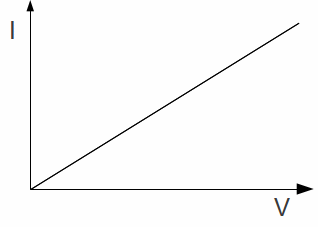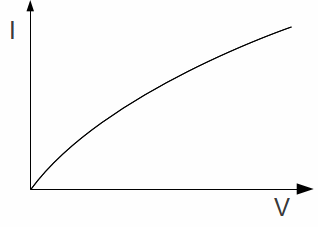Not all conductors are the same. Not all of them obey Ohm's law – voltage= current times resistance, V=IR – and some have exactly opposite characteristics to others.Of course insulators do not conduct current at all, or conduct a negligible amount and superconductors conduct forever with no resistance. Between these extremes, materials fall into four categories.
|
Ohmic resistors. Current is proportional to voltage. These materials obey Ohm's law V=IR where R is the resistance of the conductor. A graph of voltage against current will be a straight line. |
|
|
Non ohmic conductors. As the current and voltage increase, the resistance increases also so a graph of voltage against current will not be a straight line. |
|
|
Semiconductors – thermistors and light dependent resistors. As the temperature or light level increases, the resistance decreases. A different graph must be drawn for every temperature and light level. A characteristic curve is shown on the right. |
|
|
Diode. These conduct very little until the voltage reaches a certain point. The resistance is very high up to this point but then it decreases suddenly and current starts to flow. If the diode is turned around, even less current flows and a much higher voltage must be applied before current starts to flow. The diode is said to be 'reverse biased'. |
|




